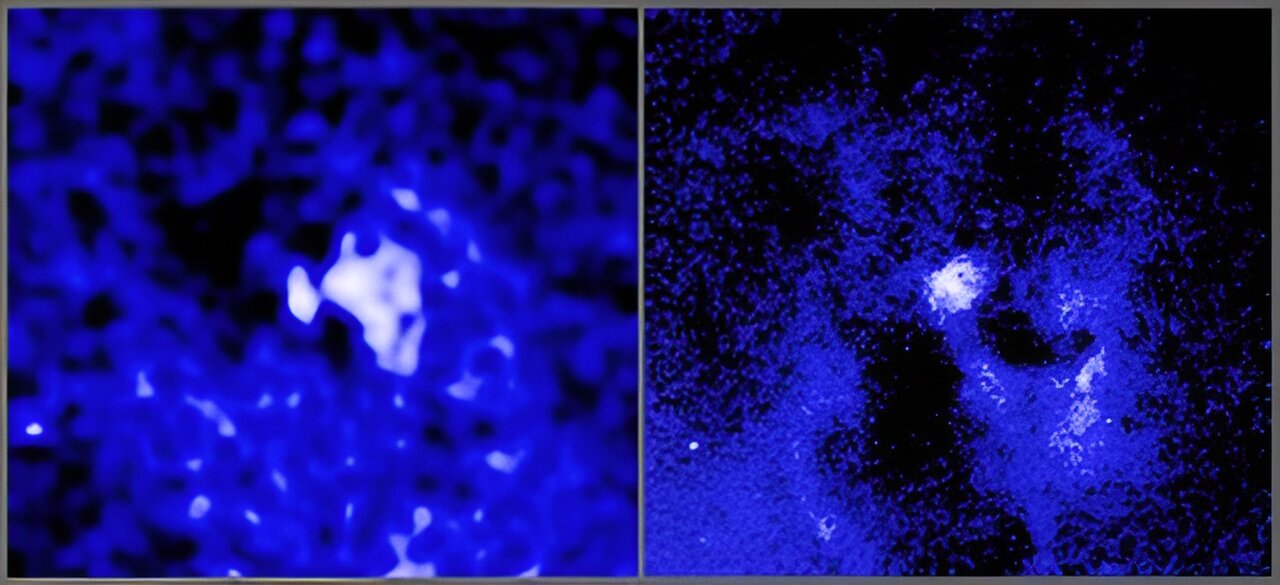Black holes, those enigmatic titans of the cosmos, continue to captivate astronomers. Their allure stems not only from the bizarre physics that govern their behavior but also from the uncanny resemblance they bear to iconic fictional creations.
A recent study has reignited this fascination by uncovering a remarkable phenomenon – black holes firing beams of particles that change direction over time, much like the Death Star’s destructive superlaser.

Death Star in the Making: Unveiling the Particle Beams
The study focused on supermassive black holes, the galactic giants residing at the hearts of galaxies. These behemoths are known to spew out jets of superheated particles in opposite directions. Imagine a fire hose spewing a concentrated stream of energy outward – that’s essentially what a black hole jet is like. Astronomers used two powerful tools to investigate these jets: the Very Long Baseline Array (VLBA), a network of radio telescopes that acts like a giant eye in the sky, and the Chandra X-ray Observatory, which unveils the universe in the realm of X-rays.
The Smoking Gun: Pockets of Emptiness
The key to understanding the jets’ direction lies in the surrounding gas. As these jets blast outwards, they carve out cavities in the gas and dust, leaving behind a void. These empty spaces are like ghostly fingerprints, revealing the past direction of the jets.
A Celestial Twister: Beams That Change Direction
The researchers made a startling discovery. In at least six of the sixteen black holes studied, the jets no longer aligned with the existing cavities. In some cases, the direction had shifted by a staggering 90 degrees! Imagine a fire hose suddenly changing direction, spraying in a completely unexpected way.
Timescales of the Dance: A Cosmic Blink
This directional shift happens incredibly fast on a cosmic scale. Estimates suggest it occurs within a timeframe of 1 to 10 million years. While this might seem like an eternity to us, for a black hole that could be billions of years old, it’s the blink of an eye.
The Disruptive Dance: Impact on Star Formation and the Galaxy’s Ecosystem
Why is this discovery significant? These jet streams are believed to play a crucial role in the complex ecosystem within galaxies. The intense energy disrupts the surrounding gas and dust, hindering their ability to cool down and clump together – a prerequisite for star birth. In essence, these jets act as a cosmic sculptor, shaping the overall star formation rate within a galaxy. Understanding their behavior is akin to understanding the tools an artist uses to create their masterpiece.
Moving Targets, Uncertain Outcomes: A Puzzle for Future Studies
This study raises intriguing questions about the cause of these shifting jets. The two leading theories delve into the heart of the black hole itself and the dynamics of its surroundings:
- Black Hole Spin: Matter swirling around the black hole and eventually falling in could cause it to spin, dragging the jets along with it, like a spinning figure skater pulling in their arms. This could explain the observed shifts, hinting at a connection between the black hole’s spin and the direction of the jets.
- Galactic Gas Dynamics: The gas within the galaxy might be moving independently of the jets, creating the illusion of shifting beams. In essence, the cavities might be remnants of past events unrelated to the current jet direction. This theory proposes a more complex interplay between the black hole, the jets, and the swirling gas within the galaxy.
The Quest Continues: A New Generation Inspired by the Cosmos
The study paves the way for further exploration. Thanks to the captivating influence of science fiction, a new generation of scientists might be inspired to unravel the mysteries of these “Death Star” black holes. With future research, we can unlock the secrets behind these shifting jets and their impact on the grand story of star formation and the overall evolution of galaxies in the universe. This discovery is just the first step in a cosmic tango, a mesmerizing dance between black holes, jets, and the birth of stars.



















